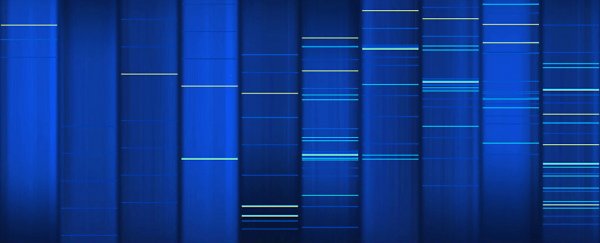Scientists around the world are constantly cooking up new and better ways to develop nanotechnologies that can be used in everything from detecting breast cancer to building better touchscreens.
But there's a one big problem with working on such a small scale: it's nearly impossible to monitor how temperatures rise and fall within these structures, because the normal tools are just too big for the job.
With this in mind, researchers in Canada have created the world's tiniest programmable thermometer - and they made it out of actual DNA. The new device is about 20,000 times smaller than a human hair.
According to the University of Montreal team, the new device was inspired by a 60-year-old discovery that DNA molecules unfold when heated to a certain temperature. Could this be the basis of new tiny thermometer technology?
"In recent years, biochemists also discovered that biomolecules such as proteins or RNA (a molecule similar to DNA) are employed as nanothermometers in living organisms and report temperature variation by folding or unfolding," said one of the team, Alexis Vallée-Bélisle.
"Inspired by those natural nanothermometers, which are typically 20,000 times smaller than a human hair, we have created various DNA structures that can fold and unfold at specifically defined temperatures."
Basically, since DNA consists of four nucleotides (A, T, C, and G), the team was able to simply design a mechanism that would force the molecule to fold or unfold at a given temperature, which is a very rudimentary form of a thermometer - it's more of a temperature signalling device.
"By adding optical reporters to these DNA structures, we can therefore create 5 nm-wide thermometers that produce an easily detectable signal as a function of temperature," said one of the researchers, Arnaud Desrosiers.
The new thermometer will hopefully allow researchers to answer a slew of questions that have gone unanswered for years, such as whether or not the human body runs hotter than 37 degrees Celsius on the nanoscale, or if naturally occurring nanomachines overheat when functioning at high rate.
The team is now working on improving their tiny DNA thermometer to incorporate it into new electronic devices.
Their findings have been published in the journal Nano Letters.
